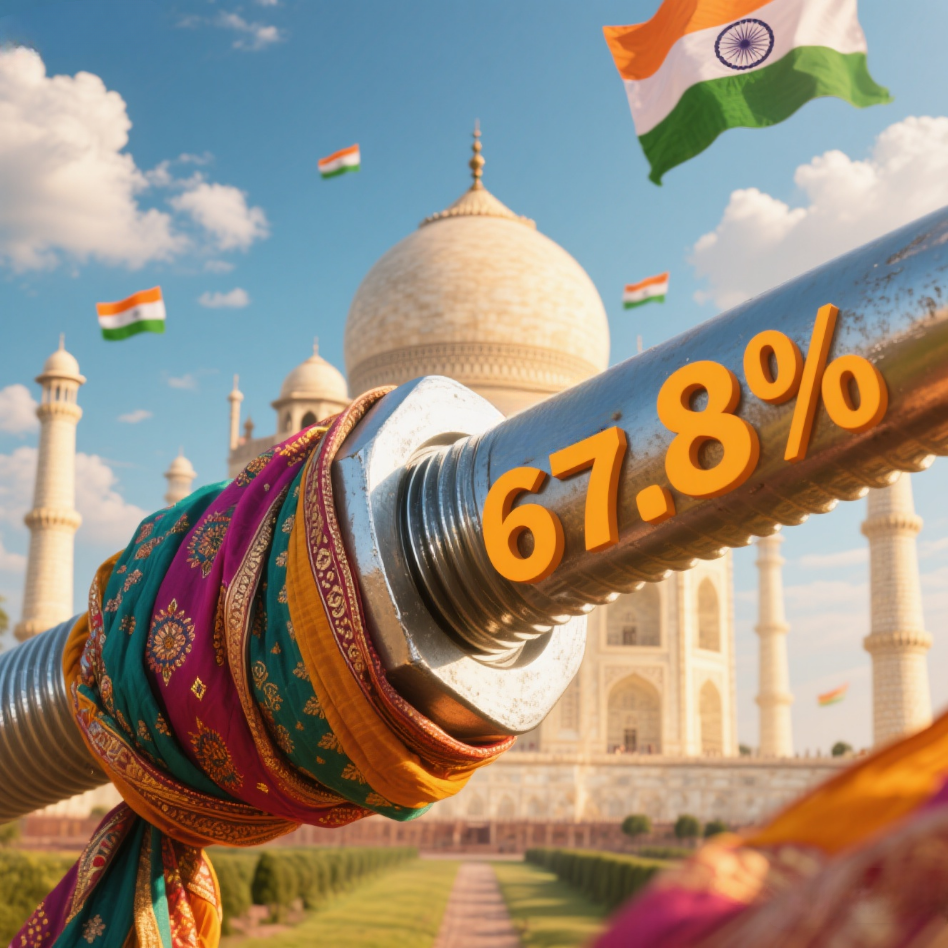Jun 07, 2025

Abstract: India’s imposition of a 67.8% anti-dumping duty on stainless steel bolts has disrupted fastener supply chains, prompting importers and distributors to pivot toward carbon steel alternatives. Major industrial suppliers are now stocking corrosion-resistant carbon steel bolts, leveraging advanced coatings and alloy treatments to meet specifications. This shift aligns with broader trends in sustainable steel production, including hydrogen-based "fossil-free" methods pioneered in Europe. Supply chain adaptations and emerging green steel technologies may reshape global fastener procurement strategies long-term.
Keywords: India anti-dumping duty, stainless steel bolts, carbon steel fasteners, green steel production, fossil-free steel, fastener alternatives, sustainable steel, industrial fasteners, steel decarbonization, green hydrogen steel
---
A. Market Disruption and Strategic Shift
India’s 67.8% anti-dumping duty on stainless steel bolts—enforced to shield domestic manufacturers from underpriced imports—has triggered a supply chain realignment across construction, automotive, and heavy equipment sectors. The tariff renders stainless bolts prohibitively expensive for many importers, with industry analysts estimating cost increases of 50–70% for downstream users. This regulatory move coincides with global steel decarbonization efforts, such as Sweden’s HYBRIT initiative, which replaces coal with green hydrogen in steel production to eliminate CO₂ emissions. While HYBRIT focuses on primary steel, its principles extend to downstream products like fasteners, where carbon steel alternatives gain traction.
B. Carbon Steel Bolts: Performance and Availability
Leading suppliers now stock carbon steel bolts with advanced coatings (e.g., zinc-nickel, Dacromet) and alloy treatments that rival stainless steel’s corrosion resistance. These alternatives offer three key advantages:
1. Cost Efficiency: Carbon steel bolts cost 30–40% less than stainless variants, offsetting anti-dumping duties.
2. Strength Adaptability: Grades like ASTM A325 or ISO 898-1 accommodate tensile strengths up to 120 ksi, matching stainless performance in structural applications.
3. Supply Chain Resilience: Distributors in Vietnam, Japan, and the EU have expanded inventories, reducing delivery lead times to under 30 days.
Table: Stainless vs. Carbon Steel Bolt Comparison
| Property | Stainless Steel (A2/A4) | Carbon Steel (Coated) |
|------------------------|-----------------------------|---------------------------|
| Corrosion Resistance | High (uncoated) | High (with coatings) |
| Tensile Strength | 80–100 ksi | 100–120 ksi |
| Cost Impact (Post-Duty)| +67.8% | Competitive |
| Lead Time (to India) | 8–12 weeks | 3–4 weeks |
C. Green Steel Momentum and Supply Chain Adaptation
The anti-dumping duty accelerates adoption of sustainable steel technologies. SSAB’s "fossil-free" steel—produced using green hydrogen and renewable-powered electric arc furnaces—exemplifies industry shifts toward near-zero-emission materials. Though currently targeting automotive sectors (e.g., Volvo’s electric trucks), this model is scalable for fasteners. Meanwhile, the Mission Possible Partnership (MPP) has mobilized 200+ companies, including Tata Steel and Rio Tinto, to commercialize net-zero steel production by 2030. Such initiatives could lower carbon steel’s environmental footprint, enhancing its appeal as a stainless alternative.
D. Logistics and Policy Responses
Indian importers report diversifying sourcing to avoid tariffs:
- Local Sourcing: Domestic carbon steel bolt production rose 18% in Q1 2025, though quality concerns persist for high-stress applications.
- Nearshoring: Thai and Indonesian suppliers gain market share with duty-exempt shipments under ASEAN trade pacts.
- Green Premiums: Some EU distributors offer certified low-carbon bolts at 10–15% premiums, targeting ESG-focused buyers.
Table: Major Suppliers’ Carbon Steel Bolt Stock Status (June 2025)
| Supplier Region | Inventory Increase | Key Alloys/Grades |
|---------------------|------------------------|-----------------------------|
| EU | +35% YoY | 10.9, En 14399 |
| Southeast Asia | +50% YoY | ASTM A325, JIS B1180 |
| India (Domestic) | +18% YoY | IS 1367, ISO 4014 |
E. Long-Term Outlook
The anti-dumping duty underscores a broader recalibration:
1. Carbon Steel Dominance: Expect 20–25% annual growth in coated carbon steel bolts through 2028, per industry forecasts.
2. Green Steel Integration: Projects like HYBRIT and MPP’s net-zero steel strategy will reduce carbon steel’s lifecycle emissions, blurring performance gaps with stainless.
3. Policy Risks: Similar tariffs may emerge in Brazil and Australia, urging global fastener suppliers to regionalize production.
As Sanjiv Paul of Tata Steel notes, collaboration across "suppliers, downstream partners, and academia" is critical to navigate this transition. The Indian market’s pivot to carbon steel bolts—once a stopgap—now signals a durable shift toward cost-effective, sustainable alternatives.
Add: 2nd Floor, No. 979 Yunhan Road, Lingang New Area of China (Shanghai) Pilot Free Trade Zone, Shanghai
Tel: +86 18971319418
Mob: +86 15926422659
Email: [email protected]
Headquartered in Shanghai and strategically serving East China, Fasten Zone is a premier platform connecting global industries with rigorously vetted, high-quality fastener manufacturers. We combine deep technical expertise, an extensive certified supplier network, and competitive pricing to deliver exceptional value across standard and custom fastener requirements.